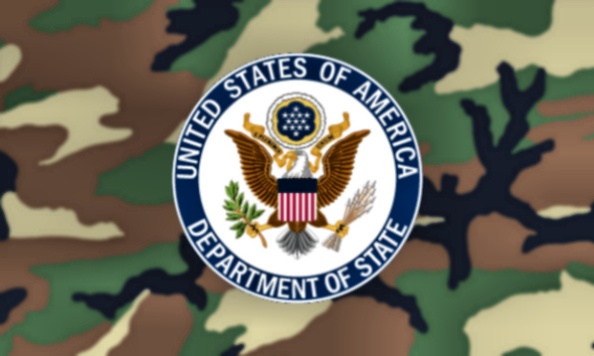Nov 09
20150
Foundations, Humanitarian Agencies, Imperialist Wars/Occupations, Non-Profit Industrial Complex, Whiteness & Aversive Racism
Coca-Cola connected capitalism Force Multipliers Pentagon The Secretary of State’s Office of Global Partnerships US State Department USAID Wal-Mart
Military Capitalism
Security for US Capitalists: The State Department and its Global Partners
Very much in line in with the idea of “connected capitalism,” the US State Department created the office of advisor for global partnerships, a Senate-confirmed position (Stavridis & Farkas, 2012, p. 17; see also DoS, 2015, 2015/3/12). The Secretary of State’s Office of Global Partnerships, instituted in 2009, is officially described as, “the entry point for collaboration between the U.S. Department of State, the public and private sectors, and civil society” (DoS, 2015). Its programs cover the Americas, scholarships for the Middle East, the training of “young African leaders,” and spreading the US-dominated Internet to “poor communities” (DoS, 2015/3/12). The State Department says its Global Partnership Initiative has spent $650 Million in public and private resources on “diplomacy and development,” reaching 1,100 “partners” from 2009 through 2012, and cultivating 6,500 private sector contacts.1 In its official propaganda, GPI boasts that its method involves starting with one country, 10 cities, 100 investors, 1,000 partnerships—which as much as these are figures too neat to be anything but invented for glossy brochures and happy-looking websites, at least this 1-10-100-1000 progression graphically shows how deeply entrenched the “force multiplier” idea has become in official circles, military and civilian.2The “partners” listed for the State Department’s GPI include philanthropic foundations, universities, airlines, weapons manufacturers, software companies, Google, Yahoo, soft drink manufacturers, retail giants, entertainment, banks, and oil companies (DoS, 2014, pp. 30-31), the core corporate sectors of the contemporary US economy. Among the US universities working under GPI are, as listed in 2014: University of Kansas, University of Massachusetts Boston, University of Washington, Northwestern University, and the University of California system (DoS, 2014, p. 31).
Since the creation of the Overseas Security Advisory Council (OSAC) in 1985 under the Reagan administration, the State Department has been involved in “security cooperation” with US “private sector interests worldwide”. Since 1985, universities, churches, and NGOs have been added to the State Department’s list of security partners. This arrangement is directly the result of demands placed on the state by US corporations: “The increase in terrorism over the last 30 years and the continuing threat against U.S. interests overseas has forced many American companies to seek advice and assistance from the U.S. Government, particularly the State Department”.3 This has been the case since OSAC’s conception: “In 1985, a handful of chief executive officers from prominent American companies met with then Secretary of State George P. Shultz to promote cooperation between the American private sector worldwide and the U.S. Government on security issues”.4 More than 3,500 US corporations, educational institutions, “faith-based institutions,” and NGOs are OSAC “constituents”.5 Current members include Northwestern University, the University of California system, McGraw Hill, and a range of the most familiar names in US entertainment, software, weapons manufacturing, financial industries, from Monsanto to Raytheon, Boeing, Microsoft, Walt Disney, Wal-Mart, Target, VISA, joined also by the Pentagon, FBI, and the Department of Homeland Security.6
Similarly, USAID, which established its “Global Development Alliance” in 2001 (see USAID, 2007), has worked with various corporations such as Coca-Cola (on water projects in 13 countries) and with Wal-Mart in Brazil. By 2005, USAID claimed to have established more than 400 such alliances, using $1.4 billion of its own funds with a further $4.6 billion from its partners (Stavridis & Farkas, 2012, p. 11).
The US Military’s Connected Capitalists: Mass Media’s “Military Analysts”
Several years ago, a series of exposés demonstrated US corporate mass media’s use of “military analysts” and “experts” who are retired senior military officers, serving in the private sector and with continued access to the Pentagon with the proviso that they repeat the Pentagon’s talking points on war (Barstow, 2008/4/20, 2009/11/28, 2011/12/24). This program, which bridged the Department of Defense, mass media, and corporations with military contracts, was described by Barstow (2008/4/20):
“The effort… has sought to exploit ideological and military allegiances, and also a powerful financial dynamic: Most of the analysts have ties to military contractors vested in the very war policies they are asked to assess on air….Records and interviews show how the Bush administration has used its control over access and information in an effort to transform the analysts into a kind of media Trojan horse—an instrument intended to shape terrorism coverage from inside the major TV and radio networks”.
A military retiree turned analyst-lobbyist military would gain access to current inside information in the Pentagon, which would be useful for the private weapons contractors they served, and in return they would sell the administration’s talking points to the public. This is “connected” in the same way a totalitarian system is connected. Information presented to the public was often fabricated, exaggerated or otherwise distorted, to boost public support for the war in Iraq. “A few” of these so-called analysts “expressed regret for participating in what they regarded as an effort to dupe the American public with propaganda dressed as independent military analysis” (Barstow, 2008/4/20). Thousands of records that were made public revealed “a symbiotic relationship where the usual dividing lines between government and journalism have been obliterated”—because the mass media had themselves been enlisted as “force multipliers”: “Internal Pentagon documents repeatedly refer to the military analysts as ‘message force multipliers’ or ‘surrogates’ who could be counted on to deliver administration ‘themes and messages’ to millions of Americans ‘in the form of their own opinions’” (Barstow, 2008/4/20).
Notes
- http://www.state.gov/s/partnerships/achievements/202394.htm
- http://www.state.gov/s/partnerships/achievements/202394.htm
- https://www.osac.gov/Pages/AboutUs.aspx
- https://www.osac.gov/Pages/AboutUs.aspx
- https://www.osac.gov/Pages/AboutUs.aspx
- https://www.osac.gov/Pages/AboutUs.aspx
References
Barstow, D. (2008/4/20). Message Machine: Behind TV Analysts, Pentagon’s Hidden Hand. The New York Times, April 20, A1.
————— . (2008/11/29). One Man’s Military-Industrial-Media Complex. The New York Times, November 29, A1.
————— . (2011/12/24). Pentagon Finds No Fault in Ties to TV Analysts. The New York Times, December 24, A20.
USAID. (2007). Global Development Alliance. Washington, DC: US Agency for International Development.
US Department of State (DoS). (2014). State of Global Partnerships Report. Washington, DC: The Secretary’s Office of Global Partnerships, US Department of State.
————— . (2015). The Secretary’s Office of Global Partnerships. Washington, DC: US Department of State.
http://www.state.gov/s/partnerships/
————— . (2015/3/12). Department of State Releases 2015 State of Global Partnerships Report—Media Note, March 12. Washington, DC: Office of the Spokesperson, US Department of State.
http://www.state.gov/r/pa/prs/ps/2015/03/238833.htm
Stavridis, J., & Farkas, E.N. (2012). The 21st Century Force Multiplier: Public—Private Collaboration. The Washington Quarterly, 35(2), 7–20.
[Maximilian C. Forte has an educational background in Latin American and Caribbean Studies, Spanish, International Relations, and Anthropology. He lived and studied for seven years in Trinidad & Tobago, for four years in Australia, and for three years in the U.S. He is a dual Italian-Canadian citizen, and had previously achieved Permanent Resident status in Trinidad & Tobago. His primary website is that of the Zero Anthropology Project.]

 Extracted from:
Extracted from:

November 5, 2015
by Maximilian Forte